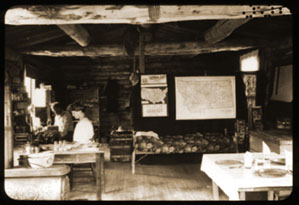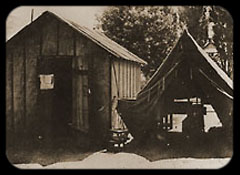History
The National Institute of Allergy and Infectious Diseases traces its origins to a small laboratory established in 1887 at the Marine Hospital on Staten Island, N.Y.
In the 1880s, boatloads of immigrants were heading towards America, some of them unknowingly bringing with them cholera and other infectious diseases. No one knew what caused these diseases, and physicians relied on clinical signs alone to determine whether someone might be carrying an infectious agent.
During this time, Dr. Joseph J. Kinyoun, a young medical officer with the Marine Hospital Service, toured scientific research centers in Europe, learning about the new science of bacteriology. Returning home, Dr. Kinyoun set up one of the first bacteriologic laboratories in the United States. Using his microscope and newly acquired medical research techniques, Dr. Kinyoun was able to isolate the cholera organism from arriving passengers in New York. For the first time, American physicians could actually see the organisms causing the disease.
Dr. Kinyoun's Laboratory of Hygiene was renamed the Hygienic Laboratory in 1891 and moved to Washington, D.C., where Congress authorized it to investigate "infectious and contagious diseases and matters pertaining to the public health." The Hygienic Laboratory became the National Institute of Health in 1930 and relocated to Bethesda, Md., in 1938.
 |
|
Dr. R. R. Parker and his wife working on Rocky Mountain spotted fever, 1916. |
About the time the Hygienic Laboratory was created, other doctors far from the East coast of the United States were struggling against a little understood disease. As the population expanded westward, many early settlers in the Montana foothills of the rugged Bitteroot Range of the Rocky Mountains were plagued with a disease known as "black measles," or "spotted fever," now known as Rocky Mountain spotted fever. In 1902, the U.S. Public Health Service sent out a research team to find the cause.
Tents, cabins, and an old schoolhouse were used for housing the early Rocky Mountain Laboratory where researchers determined that the disease was transmitted by ticks, identified the cause as what is now called Rickettsia rickettsii, and formulated a vaccine against the agent.
 |
| Parker's woodshed lab |
In gratitude, the state of Montana built a new facility, which the Public Health Service then purchased in 1931. The Rocky Mountain Laboratory in Hamilton, Mont., became part of the Division of Infectious Diseases at the National Institute of Health in 1937.
In mid-1948, the National Institute of Health became the National Institutes of Health with the creation of several individual institutes. Later that year, the Rocky Mountain Laboratory and the Biologics Control Laboratory joined the Division of Infectious Diseases and the Division of Tropical Diseases of the National Institutes of Health to form the National Microbiological Institute.
Dr.Victor Haas was the Institute's first director. In 1955, Congress changed the name of the National Microbiological Institute to the National Institute of Allergy and Infectious Diseases to reflect the inclusion of allergy and immunologic research.
 |
| Developing a vaccine for Rocky Mountain spotted fever. The vaccine was created in 1924 at the Rocky Mountain Labs. |
As NIAID continues to pursue progress in understanding, treating and preventing infectious and immunologic diseases, it recognizes that new challenges to public health continue to emerge. NIAID will continue its tradition of supporting innovative scientific approaches to address the causes of these diseases and find better ways to prevent, diagnose, and treat them.
back to top